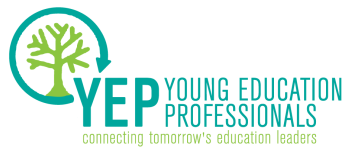As I’ve reflected on the reaction to the Zimmerman verdict, one thing that has stood out to me is the difficulty of so many, conservatives and liberals alike, to admit that subconscious racial biases exist within themselves. Maybe Zimmerman, for all that he has seen (perhaps images like the ones posted at the students’ event), had a reason to be suspicious (though not a reason to play police); and Martin, for all he has seen, had a reason to believe he was in danger. The reality is that educators and students across the country roam the halls of their schools every day, loaded with the same suspicions that both Zimmerman and Martin felt toward each other that night — all of the biases and preconceived notions on race that lead to tension, conflict, and misunderstanding.
We face these challenges in our classrooms every day. Sometimes we try to look beyond race, hoping that in the Obama era “post-racial” attitudes will prevail and with our leadership and an increasingly diverse world around them, our students will be far more colorblind than their predecessors. But we’re failing to take the sensible path: Admit that our racial biases are real and fight like hell to rise above them.
Despite being passionate about working with students whose circumstances have been more difficult than my own and my own conscious efforts to combat racism and prejudice whenever I see it, I harbor the biases that growing up white in America breeds. Last week President Obama spoke about his own experience of being black in America: a passenger on the elevator clutching her belongings as he stepped on and car doors locking as he walked by. I’ve never experienced what it feels like to be profiled in these ways, but I know I have been that profiler. In those moments when I am struck by that subconscious bias toward a group of young black males I see on the street as I walk home at night, I try to remember that any one of them could be my student. It makes me fight harder to make sure that the work I do as an educator is inclusive and fair.
It’s true that it’s hard to fully understand the lives of students without having experienced that prejudice yourself. (It’s why our workplaces need to reflect the diversity of the students we teach.) But diversity — of background and of thought — can steer us right. We can also make sure our lessons, events, and everyday conversations with students reflect our values. We shouldn’t seek to “accommodate” each demographic, but to include them in every practical way possible. In a social studies classroom, this might mean supplementing (or substituting) a history, geography, or politics curriculum that leans too heavily toward all-things-northern-hemisphere. In a language arts classroom, this may mean teaching English in a way that doesn’t denigrate the language and vocabulary so many of our students have grown up with, but places it in context. It is sometimes as simple as making sure what we teach is linguistically and culturally accessible to everyone.
One thing is for sure: We won’t make progress by pretending to be “post-racial” or wishing away the inconveniences our differences can cause. We can only get there by acknowledging our biases and working to fight them. The classroom is a perfect place to start.
Scott Goldstein is a social studies and ESL teacher at a D.C. public charter school. He can be reached at scottaudc(at)gmail(dot)com or on Twitter (at)ScottGoldstein.

 RSS Feed
RSS Feed